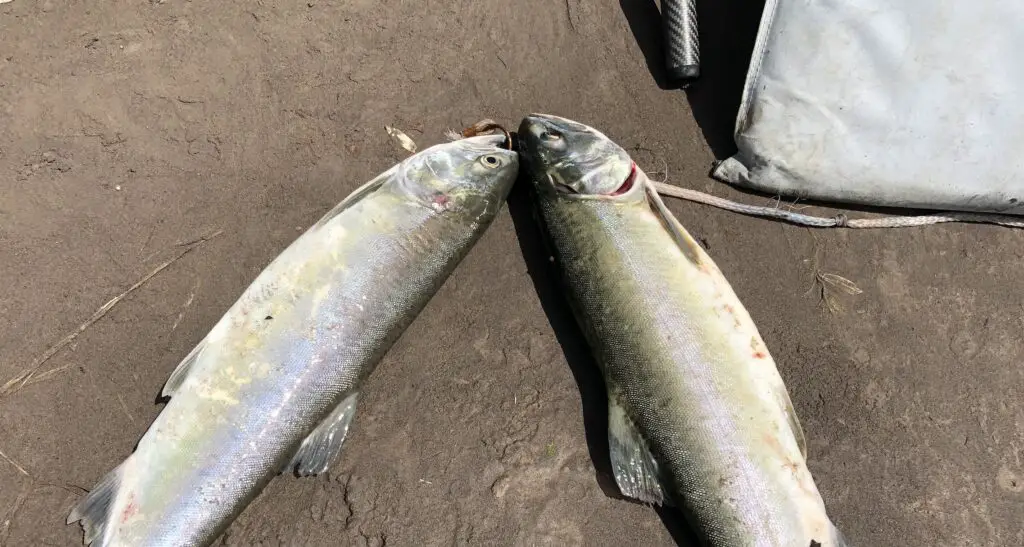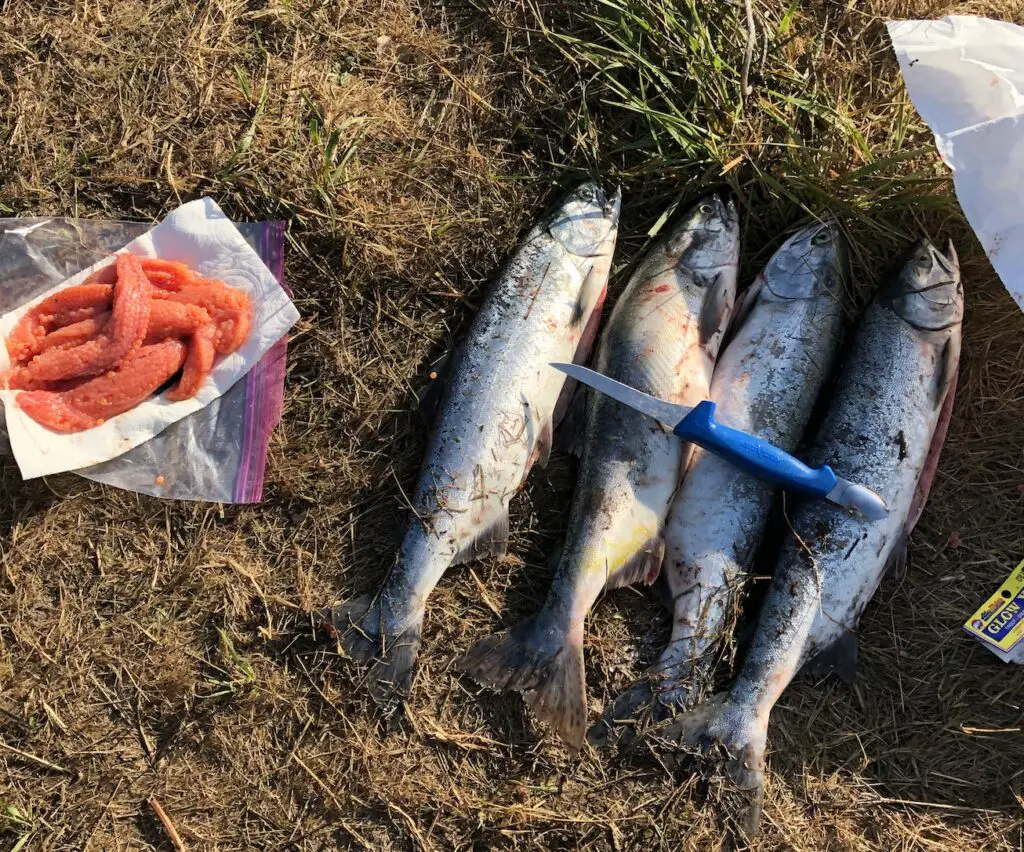
Flossing is a technique that involves attempting to swing your leader through the drift to allow the leader to enter the open mouth of a salmon attempting to swim upstream.

The flosser will then notice a difference in line movement or “feel” the fish and attempt to set the hook on the unsuspecting fish.
Do some searching in fishing forums and you will find every bit of controversy on this technique.
To be clear, some of the fish taken with this technique are actually biting the terminal gear, but most are not.
Is flossing snagging?
Snagging An effort to take fish with a hook
WDFW Fishing Regulations Definitions
and line in a manner that the fish does not
take the hook or hooks voluntarily in its mouth.
The above excerpt is from the 2019-2020 WDFW regulations pamphlet.
Snagging is an illegal way to fish for salmon and according to this definition, flossing is technically snagging.
Yes, I’m sure this pisses some folks off but keep in mind, I’m not judging, just pointing out facts to educate anyone who’s just starting off fishing in the river for salmon or wants to add some new techniques to their game.
Ask anyone this question on the river, and you will get a much different answer.
The term “snagger” is usually associated with someone who uses a very short leader, weighted hook or large treble, and attempts to yank it through the drift, hoping to “snag” a salmon.
The flosser is attempting to hook a fish in the mouth and would be just as happy if the fish bit, but is generally happy to call that nuance something which can never really be known.

Did the fish really bite? How can you tell? Please refer to the section on drift fishing in the river fishing for salmon article.
Having participated in both approaches, I will say, that if you have only primarily flossed or even just only leveraged the drift fishing technique, you are missing out on some of the best aspects of salmon fishing in the rivers.
Generally, you must choose which path you will follow in learning how to river fish for salmon.
There’s a vast difference between learning how to get a salmon to bite in the rivers and learning how to floss a salmon (both require skill!).
The principles are all different and the parts of the river you fish are also usually different.
Nobody likes to address this topic, but it’s terribly confusing to any beginner.
In fact, I would hazard a guess that 50% (maybe more) of the anglers who floss don’t even know that’s what they are doing. They are convinced because it’s how the knowledge was handed down to them, that the flossed fish are biting.
They also don’t like being told that their fish aren’t biting. Call one of these anglers a snagger? Them’s fightin’ words!
Salmon, absolutely will bite on a river and it’s an incredibly rewarding experience. I’m not here to judge but to just lay out the facts.
In many situations, expert salmon anglers targeting a bite, will outfish the flossers 10 to 1. There are also “professional flossers”, who know exactly what they are doing and can hook a fish on almost every cast.
I may extend this article further addressing “how to floss for salmon” at some point (probably not!).
Or maybe how to floss for salmon while looking like you are attempting to get a bite? OK, now I’m just poking fun!
I was a F&W Officer in Wa. for 38 years. Excellent article! ! There’s is more info out there, namely the bios have studied floseing and mortality factors related to it as well as leader lengths vs. foul hook frequency.
G. Haw,
Thank you for taking the time to comment here! Now that I’ve approved your first comment, future ones will be posted immediately without waiting. Thanks for your 38 years of service to Fish and Wildlife!
I’ve found the most people who started out flossing for salmon, end up enjoying the “fishing side” of the experience a lot more once they take on float fishing or some other technique. It’s also incredibly fun to drift fish in a way that isn’t trying to floss (even accidentally).
“Anti snagging rules” were established . Prior to “anti snagging rules” snagging was already unlawful and easy to enforce. When the cubical biologists allowed for the retention of salmon hooked “ on or about the head” the tactic exploded in popularity , largely in places like the Puyallup and Skokomish where snagging was already a problem. The tactic has been used for many many years by guides on non biting sockeye in Alaska.
In the book “Confessions of an urban fish and wildlife officer” it is defined on page 218 as: A fishing tactic where the angler attempts to appear legal when unlawfully attempting to snag a fish using LAWFUL gear.
I’ve seeing done on the Washougal with lines of guys all using the same illegal technique. It go too bad that WDFW officers began watching from high on the banks hidden by trees and brush to capture and prosecute. It works when it works. But if officers are pursuing, it restarts again. Very frustrating. And at the same time its always a pleasure to fish with true sportsmen and women.
Great points! Because so many people do it and often don’t know any better or that that’s even what they are doing, I don’t like to harp on it too much besides trying to educate. Getting salmon to bite is truly more fun! And often more effective! I fished eggs and beads under a float a few days ago next to some flossers who kept foul hooking and losing fish… I limited fishing legally and left with my two fish plus had several other bites I missed!
How do you get an elk or Goose to bit the bullet so that you can take them legally?
Just kidding but like now on the Skagit, they are at over 4,000 unneeded Coho, they probably need a way to not waste the resource when it’s abundant.
Steve,
Thats a good point. There are many many shades of gray with this. I used to be more judgmental about it, but now I’m more wanting to educate and let people decide what they want to do, and for me it’s just more fun to get them to bite…but there are fisheries where’s it’s kind of like yeah…